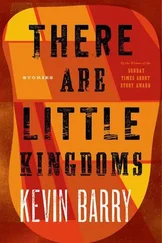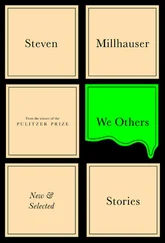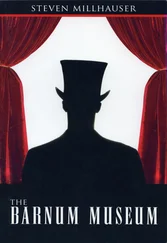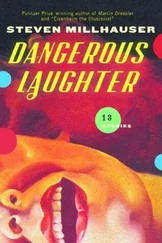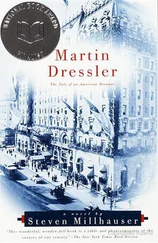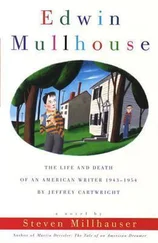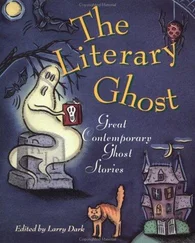[17]
SOPHIA DAYDREAMING
1841
Oil on canvas, 27 1/2 × 34 in.
We know from Elizabeth’s Journal that Sophia disliked being painted and agreed to pose for this picture only at Elizabeth’s “urgent entreaty” (3 July 1841). It is not clear whether she disliked posing in general, or posing for Moorash in particular; she appears to have felt uneasy at being stared at and “studied to death” (Journal, 6 July). It is difficult to avoid the inference that she was disturbed by the intimacy of a prolonged sitting, in which she had to endure passively Moorash’s sustained gaze. Sophia had always had to fight a secret disapproval of her brother’s eccentric friend; after the failed marriage proposal she held Moorash responsible for Elizabeth’s refusal. Nor did she share her brother’s enthusiasm for Moorash’s painting: Sophia viewed the pictures with bewilderment and growing distaste, always preferring the meticulously detailed and elegantly precise portraits of Chester Calcott and Edward Ingham Vail.
The sittings began on 3 July and continued for more than a week before they were terminated by Sophia. She appears to have relented, for on 23 July Elizabeth notes another sitting; the last recorded session took place on 8 August. Moorash worked on the painting all summer but did not complete it until October, long after Sophia and William had returned to Boston. Sophia’s opinion of the painting is not known, but from what we know of her taste she cannot have cared for it. The painting is reminiscent of Moorash’s earlier masterpiece, Elizabeth in Dream , although here he makes use of the device of the landscape seen from a window. Part of a window frame divides the painting into two realms, an inner realm indicated by a portion of wall on which part of a picture (unidentified) is visible, and an outer realm of darkening garden and dusky sky. But the contrasts are deliberately undermined and thrown into question, for it is impossible to make a neat distinction between the world of art and the world of nature, or the world of imagination and the world of experience: the room flows into landscape, which in turn echoes the room, and Sophia herself flows wraithlike through the window into the garden, thereby binding the inner and outer worlds. Both worlds of the painting appear to be Sophia’s daydream, but she herself is no less dreamlike. It is as if Moorash had attempted to paint the experience of daydream itself, in which the boundaries between inner and outer grow uncertain. Elizabeth was “deeply affected” by the painting, which she considered “masterful” (16 October). Moorash promptly gave it to her, and she hung it in her bedroom between two windows looking out over the garden.
[18]
PHAEDRIA’S ISLE
1842
Oil on canvas, 32 1/16 × 42 in.
In the long winter evenings of 1841–42 Elizabeth read aloud to Edmund, night after night, Sir Walter Scott’s Guy Mannering, Quentin Durward , and The Black Dwarf , Hawthorne’s Twice-Told Tales (the edition of 1837), Byron’s Manfred , and Spenser’s Faerie Queene. She appears to have read the latter at the rate of one canto a night, over a period of seventy-four consecutive nights (six complete Books of twelve cantos each, and the two Mutabilitie cantos). During the readings Edmund liked to lie on the sofa in the kitchen with his ankles crossed and his head on a pillow, warming his hands on the bowl of his pipe and staring off into bluish smoke-clouds.
The subject is taken from Book II, canto vi of The Faerie Queene , in which Spenser introduces the temptress Phaedria: her aim is to draw knights across the Idle Lake to her pleasant isle and lull them into a life of drowsy sensual pleasure. Like Spenser’s more sinister temptress in the Bower of Bliss, Phaedria derives from a rich tradition of Renaissance sorceresses in enchanted gardens, in particular Ariosto’s Alcina and Tasso’s Armida, both of whom are modeled after Homer’s Circe. Phaedria is presented as “loose” and “light,” but she represents a powerful temptation: to swerve away from a difficult task, to rest awhile, to relax the will. She is the secret voice whispering in the ear of all those whose lives are bent toward difficult achievement: she is the song the sirens sang, the same song heard by Ulysses lashed to the mast and by Gustav von Aschenbach relaxing on the beach. Moorash, who lived to work, must often have entertained the dream of some other life, in some other world: a life of peace, sweetness, and sensual ease.
Moorash wisely makes no attempt to imitate Spenser’s description, but instead seeks to render the island’s power of enchantment: the dark island looms before us in an unearthly light, parting here and there to reveal dim, green-shadowy recesses that wind back into velvet darkness. The island, a gloomy mass of overlapping blues, greens, and violets painted in free, flowing brushstrokes, appears to beckon us inward, to soothe us with the scents of green summer dusks, to drug our senses with a dreamlike melting sweetness: it invites us to yield, to bow our weary heads. But even as it does so we are aware of a counterpressure. That dark is too dark, those mossy recesses close too quickly. The unseen bristles everywhere. There are hints that we will never return from the inviting darkness, and that what presents itself as sensual surrender is nothing but Death. Moorash’s vision, in fact, reaches to the deep place where love becomes death: the desire to surrender, the longing to lose oneself in another, becomes the final surrender, the longing for annihilation.
The question of the influence of Spenser-derived paintings on Moorash’s Phaedria remains unanswered. Since the 1770s The Faerie Queene had inspired a host of paintings in England and America; Moorash may have known West’s three Spenser paintings of the 1770s ( Una in the Woods, The Cave of Despair , and Fidelia and Speranza) , Copley’s Red Cross Knight (1793), and Allston’s The Flight of Florimell (1819), although there is no evidence that he ever gave a moment’s thought to a single one of these solemn academic studies, and in any case his approach to Spenser is entirely his own. Influence, however oblique, is far more likely to have come from the mysterious Spenser cult that raged in Cambridge during Moorash’s first two undergraduate years (1826–28) before ceasing abruptly under suspicious circumstances, and that took its most distinctive expression in the form of a secret society who called themselves the Sons and Daughters of the Faerie Queene. This group of men and women from Cambridge’s highest social circle adopted names of characters in The Faerie Queene (Busirane, False Florimell, Scudamore, Queen Malecasta, Belphoebe, Sansjoy), met weekly at midnight in the homes of various members, and enacted elaborately costumed tableaux vivants based on scenes from their beloved poem, in which women of impeccable moral standards and unquestioned virtue were said to dress like nymphs, shepherdesses, temptresses, and fleeing maidens, in scant and semitransparent costumes, while pillars of male society assumed the garb of satyrs, wicked enchanters, and lustful hermits. The tableaux were enhanced by elaborate stage scenery designed and painted by Richard Henry Daw, later a minor member of the Phantasmacists but at this time known to be an acquaintance of Chester Calcott and William Pinney. Can Moorash have been present at one of the midnight meetings of the Sons and Daughters of the Faerie Queene, who occasionally issued highly coveted invitations to friends outside the charmed circle? Daw’s backdrops were destroyed by fire in 1832 but are said to have produced remarkably suggestive atmospheric effects, especially in the dark forest scenes favored by the group, in which he was adept at conveying sensations of lurking evil and hidden menace by means of mossy rocks, shadowy grottoes, gnarled branches, and twisting paths, murkily illumined by red-paned lanterns and obscured by the smoke of concealed braziers.
Читать дальше



